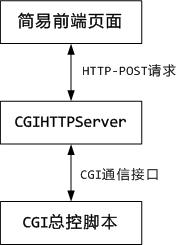Python基于pycrypto实现的AES加密和解密算法示例
本文实例讲述了Python基于pycrypto实现的AES加密和解密算法。分享给大家供大家参考,具体如下:
一 代码
# -*- coding: UTF-8 -*-
import string
import random
from Crypto.Cipher import AES
def keyGenerater(length):
'''''生成指定长度的秘钥'''
if length not in (16, 24, 32):
return None
x = string.ascii_letters+string.digits
return ''.join([random.choice(x) for i in range(length)])
def encryptor_decryptor(key, mode):
return AES.new(key, mode, b'0000000000000000')
#使用指定密钥和模式对给定信息进行加密
def AESencrypt(key, mode, text):
encryptor = encryptor_decryptor(key, mode)
return encryptor.encrypt(text)
#使用指定密钥和模式对给定信息进行解密
def AESdecrypt(key, mode, text):
decryptor = encryptor_decryptor(key, mode)
return decryptor.decrypt(text)
if __name__ == '__main__':
text = 'Python3.5 is excellent.'
key = keyGenerater(16)
#随机选择AES的模式
mode = random.choice((AES.MODE_CBC, AES.MODE_CFB, AES.MODE_ECB, AES.MODE_OFB))
if not key:
print('Something is wrong.')
else:
print('key:', key)
print('mode:', mode)
print('Before encryption:', text)
#明文必须以字节串形式,且长度为16的倍数
text_encoded = text.encode()
text_length = len(text_encoded)
padding_length = 16 - text_length%16
text_encoded = text_encoded + b'0'*padding_length
text_encrypted = AESencrypt(key, mode, text_encoded)
print('After encryption:', text_encrypted)
text_decrypted =AESdecrypt(key, mode, text_encrypted)
print('After decryption:', text_decrypted.decode()[:-padding_length])
二 运行结果
E:\python\python可以这样学\第18章 密码学编程\code>python AES_test.py
('key:', 'D5pcO6iu0HIbj3I2')
('mode:', 1)
('Before encryption:', 'Python3.5 is excellent.')
('After encryption:', '\xf4\x15\x9f\xaf\xea\xd0\n\x03\xfdf\xf6}9\xaa\xa34\xb4\x1eL2\x0e \x16\xa5 \xff?\x8bA\x8e\xdd\xa8')
('After decryption:', u'Python3.5 is excellent.')
PS:关于加密解密感兴趣的朋友还可以参考本站在线工具:
文字在线加密解密工具(包含AES、DES、RC4等):
http://tools.jb51.net/password/txt_encode
MD5在线加密工具:
http://tools.jb51.net/password/CreateMD5Password
在线散列/哈希算法加密工具:
http://tools.jb51.net/password/hash_encrypt
在线MD5/hash/SHA-1/SHA-2/SHA-256/SHA-512/SHA-3/RIPEMD-160加密工具:
http://tools.jb51.net/password/hash_md5_sha
在线sha1/sha224/sha256/sha384/sha512加密工具:
http://tools.jb51.net/password/sha_encode
更多关于Python相关内容感兴趣的读者可查看本站专题:《Python加密解密算法与技巧总结》、《Python编码操作技巧总结》、《Python数据结构与算法教程》、《Python函数使用技巧总结》、《Python字符串操作技巧汇总》、《Python入门与进阶经典教程》及《Python文件与目录操作技巧汇总》
希望本文所述对大家Python程序设计有所帮助。
